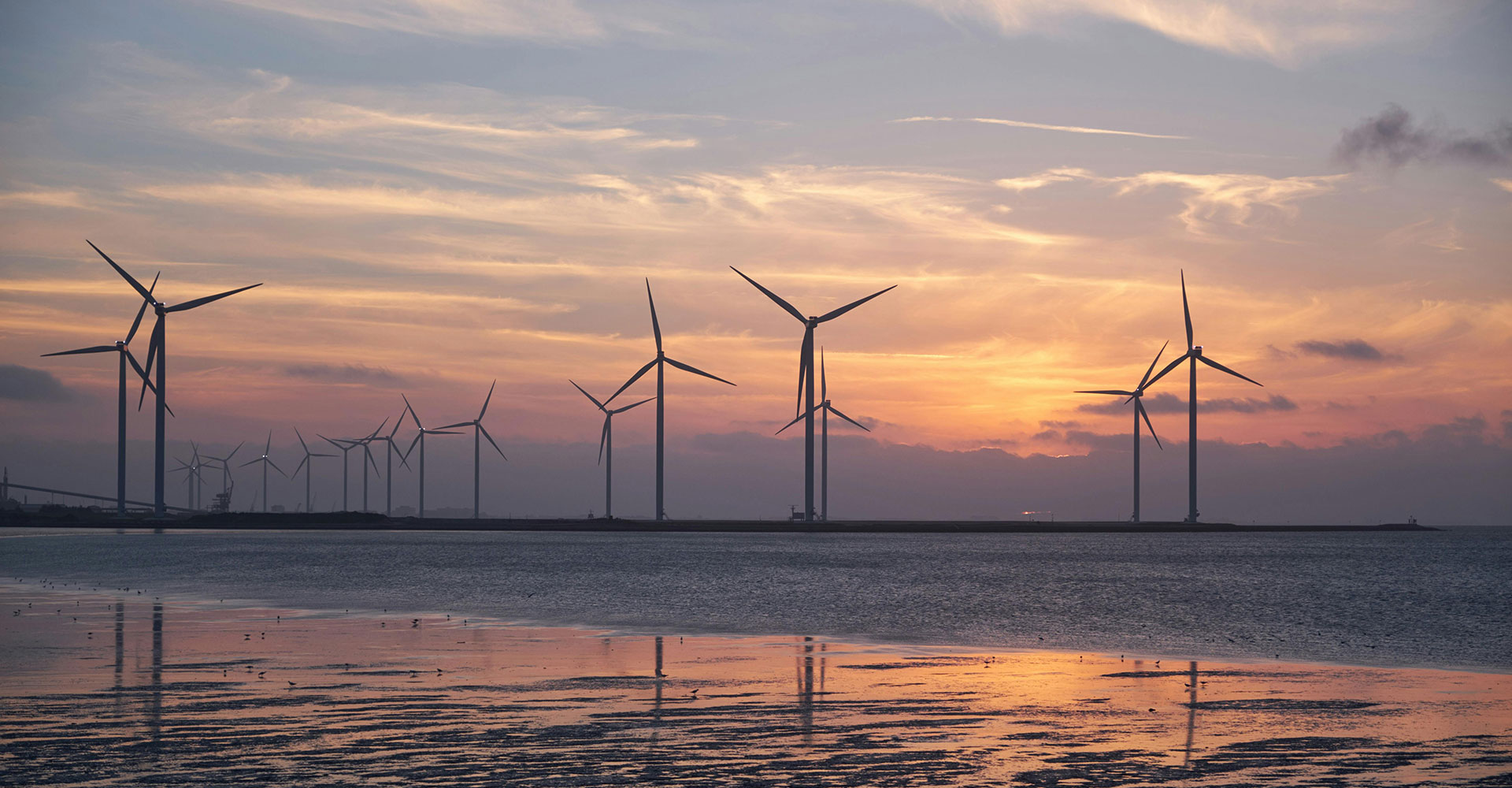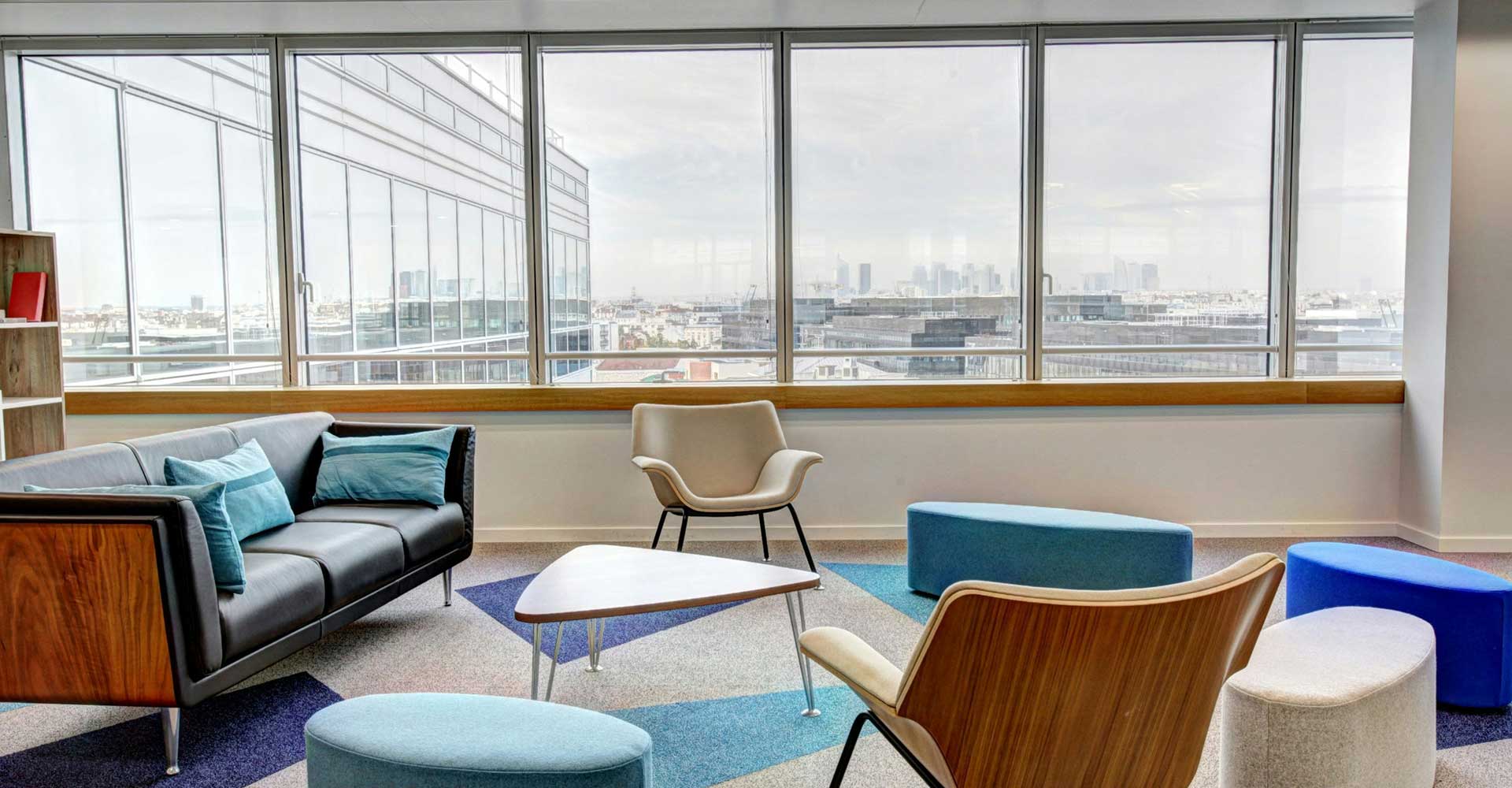Office design is shifting away from cold, sterile environments toward spaces that prioritize comfort and well-being and celebrate personality. Interior designers are reimagining color, furniture, and lighting to create more inviting and productive workplaces.
The power of color: Bringing nature indoors
Imagine an office where vibrant red sparks lively discussions, soothing teal offers a tranquil escape for more focused work, and ebony black doors delineate executive spaces. Design philosophy is evolving, driven by the desire to boost productivity and motivation, with color poised to play a pivotal role in this transformation.
A recent Wall Street Journal article highlighted the science of color. Studies have revealed a deeper understanding of how color influences human psychology, and this knowledge is providing new insights to guide the creation of office spaces. Specific colors do have the power to enhance feelings of well-being, sharpen alertness, and more.
It’s been five years since the COVID-driven work-from-home era, and the pandemic’s influence continues to send ripples influencing employee preferences. When everyone caught glimpses of each other’s home spaces, we could see the colors, textures, and designs reflecting our colleagues’ personalities. Many companies requiring their employees to return to the office, whether full-time or part-time, have undertaken renovations to create a work environment that complements home offices.
Design trends include embracing nature-based colors like blues, browns, and greens to foster a sense of health and well-being. Debra Hoffman, president of System Office Design, a Princeton, NJ-based full-service interior design and office furniture company specializing in healthcare and corporate projects, said this trend has translated directly into the materials and palettes she works with.
“We’re seeing a clear move away from very cold colors, with a preference for warmer, more inviting tones,” she said. “Vinyl flooring patterns, carpet tiles, and even new paint colors from companies like Benjamin Moore are leaning into those calming blues, greens, and beige-y earth-toned hues. These elements are crucial for layering and warming up an office space to make it feel less institutional and more human.”
Biophilic design and mobile furniture: A new era of collaboration
Beyond color, the integration of biophilic products is incredibly significant, Hoffman said. “We’re seeing a resurgence of wood paneling on walls, and timber elements are popular. Murals depicting nature scenes and artwork with colorful, natural themes are big trends that contribute to a more organic, comforting atmosphere,” she said.
Also popular?
- Indoor water features, which add a soothing, dynamic element to the environment
- Biophilic meeting rooms with live potted plants, natural wood furniture, and large windows inviting nature inside
- Green ceilings with hanging planters or moss
- Rooftop gardens for relaxing and outside collaboration
The evolution of office furniture is equally striking, particularly in collaborative spaces. The days of hiding in individual offices are fading, giving way to a focus on encouraging interaction. “The furniture we provide now is often on wheels or castors so everything is mobile,” she said. One recent client, echoing this evolution, said they wanted nothing fixed. Everything needed to be movable and flexible.
Such adaptability facilitates dynamic space reconfigurations to support different work styles and team interactions. Modular furniture allows teams to quickly rearrange spaces to address a particular need for an hour, a day, or a week before readjusting for the next use. Even whiteboards have gone mobile, sometimes featuring moss products on the other side for added fun, and allowing for flexible room division and smaller conversation venues. Seating options range from individual contemplative spaces to communal sofa-like arrangements, further underscoring the shift toward varied collaborative zones.
Equally important?
- Sustainable materials like bamboo chairs and desks, repurposed metal or recycled glass for partitions and countertops, and chipboard manufactured from 100% recycled waste wood
- Ergonomic chairs for better support and posture—important for people who sit in front of their desks all day
- Foldable partitions, multifunctional chairs, and modular desks that allow employees to customize their workspace, even if they work a hybrid schedule
Branding and personalization: A delicate balance
While the desire to personalize your space is strong, particularly for those wanting specific colors for their individual offices, corporate branding often dictates the primary palette. “When a client’s brand colors are gray and blue, for example,” said Hoffman, “we integrate those but always look for ways to introduce warmth through other features. The goal is to harmonize brand identity with a comfortable, inviting atmosphere.”
The impact of this strategy? Huge. Hoffman recently received an email from a doctor whose office her firm designed, saying, “To this day, patients come into the office and sing your praises of the color scheme and design ideas in our office. We can’t thank you enough.”
Hoffman paired very natural wood with black and charcoal carpeting for another client — a cutting-edge engineering company. “While their brand colors included red, black, and charcoal, we opted for warm, light maple furniture to avoid a cold, stark feel,” she said.
Addressing outdated furniture and lighting
A common challenge clients face? How to dispose of old, outdated furniture. Unfortunately, furniture older than five years generally has little resale value, with only top manufacturers like Steelcase or MillerKnoll retaining minimal worth, said Hoffman.
“While we try to integrate salvageable pieces or suggest donations to charities or staff, the used furniture market has dwindled considerably,” she said. “Many older pieces also lack the functionality modern office environments require. But we do look for creative solutions. For example, we successfully reconfigured 25-year-old Steelcase cubicles for a large regional bank, extending their life despite the lack of readily available hardware.
Lighting is another critical but often overlooked aspect of office design. Many older offices have converted to LED lighting without upgrading their ceilings, which can dramatically alter the appearance of colors. The difference between warm, cool, and cold lighting can impact how we perceive colors.
Hoffman said it’s important to address lighting early in the design process. She sometimes brings in architects for reflective ceiling plans or contractors to handle the lighting replacement. “While personalized LED lighting within individual cubicles isn’t a widespread trend I’ve encountered,” she said, “I have seen individuals choosing desk lamps instead of overhead lighting to create a more personalized ambiance.”
Ultimately, LED lighting is also more eco-friendly because it:
- Uses less energy
- Costs less because it lasts longer
- Improves lightning quality
Navigating tariffs and market uncertainty
The current economic climate, particularly with fluctuating tariffs, presents an ongoing challenge for many sectors, including the design market. Manufacturers continue to send emails warning of potential price increases, although many are trying to absorb costs rather than pass them on to their customers. Hoffman said few of her clients have asked about tariffs, and she anticipates that tariff surcharges will be itemized similarly to how companies itemized fuel and freight surcharges during the pandemic. Her company is also prepared to absorb some of those costs.
The S&P 500, Dow, and Nasdaq have been trending down, and even with occasional gains, economists predict the market will continue to slow. This uncertainty has impacted clients’ decisions to proceed with expensive renovation and upgrade projects. Some experts fear that companies may cut costs, reducing the amount of office space they need. Building owners may pause projects meant to upgrade spaces to increase their appeal, creating additional challenges for companies that want their workforces to return to the office.
As Louis Molinini, Americas head of project and development services at Jones Lasalle Inc., said, “A major ‘carrot’ in luring workers back to the office since the pandemic has been offering a new — or heavily renovated — workplace. Getting people back to the office and attendance where it truly needs to be, as well as trying to fit within reduced capital budgets, is becoming a real topic on every single project we have.”
Without a crystal ball, it’s challenging to predict the effect of tariffs and the broader economy on office redesigns and buildouts.
Considering an update to your corporate or healthcare space? Contact CREA United member Debra Hoffman. If you’re a commercial real estate investor or looking for a specific property to meet your company’s needs, we invite you to talk to the professionals at CREA United. This organization of CRE professionals from 92 firms represents all disciplines within the CRE industry, encompassing a diverse range of professionals, from brokers and subcontractors to financial services, security systems, interior designers, architects, movers, IT specialists, and more.

